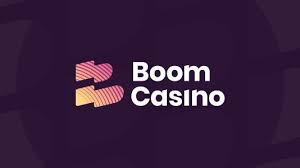
What is the Future of Technology in Business
Technology is constantly evolving and businesses must adapt to stay competitive.
In this article, we will explore the future of technology in business and 7 ways businesses are using technology to stay ahead of the curve.
1. Businesses Will Continue to Adopt Cloud Technology
Cloud computing has revolutionized the way businesses operate. By moving data and applications to the cloud, businesses can save money on hardware and IT costs. In addition, cloud-based applications can be accessed from anywhere, making it easier for employees to work remotely.
As more businesses adopt cloud technology, we will see an increase in the use of artificial intelligence (AI) and machine learning. These technologies will allow businesses to automate repetitive tasks, such as customer service or data entry. In addition, AI can be used to analyze data to help businesses make better decisions.
2. The Internet of Things Will Become More commonplace
The Internet of Things (IoT) refers to the interconnectedness of devices and sensors that are able to collect and share data. This data can be used to improve efficiency and productivity in businesses. For example, a manufacturing company may use IoT-enabled sensors to track the performance of its machines. This data can then be used to improve the design of future products.
IoT will continue to grow in popularity as more businesses adopt it. We will see an increase in the use of IoT-enabled devices, such as drones and robots. In addition, 5G technology will enable businesses to collect and process data faster. This will allow businesses to make real-time decisions based on data.
3. Businesses Will Become More Data-Driven
Data is becoming increasingly important in business. With the advent of big data, businesses are now able to collect and store large amounts of data. This data can be used to improve decision-making, understand customer behavior, and develop new products and services.
As businesses become more data-driven, we will see an increase in the use of analytics and business intelligence tools. These tools will help businesses to make sense of their data and make better decisions. In addition, we will see an increase in the use of machine learning to automate tasks such as data analysis.
4. Virtual Reality will become more commonplace
Virtual reality (VR) is a technology that allows users to experience a simulated environment. VR is often used for gaming and entertainment purposes. However, it is also being used in businesses to train employees and provide customers with a virtual tour of a product or service.
As VR becomes more affordable and accessible, we will see an increase in its use in business. VR can be used for employee training, marketing, and even customer service. In addition, businesses will use VR to create immersive experiences for their customers.
5. Blockchain Will Transform Businesses
Blockchain is a distributed database that allows for secure, transparent, and tamper-proof data storage. This makes it ideal for storing data such as financial transactions or medical records.
Blockchain will have a transformative effect on businesses. This technology can be used to streamline processes, such as supply chain management or identity verification. In addition, blockchain can be used to create new business models, such as decentralized applications or tokenized assets.
6. Businesses Will Become More Flexible
The traditional 9-to-5 workday is becoming increasingly outdated. With the advent of digital nomads and the rise of the gig economy, more people are working remotely and on a flexible schedule.
As businesses become more flexible, we will see an increase in the use of co-working spaces and remote working arrangements. In addition, businesses will provide more opportunities for employees to work flexibly.
7. Augmented Reality Will Be Used More in Business
Augmented reality (AR) is a technology that superimposes computer-generated images on the real world. This can be used to provide information about products or services. For example, a customer may use an AR app to see how a piece of furniture would look in their home.
Conclusion:
The above-mentioned points are only a few of the ways in which we will see businesses change in the next decade. With the continued growth of technology, we can expect to see even more changes in the way businesses operate.






